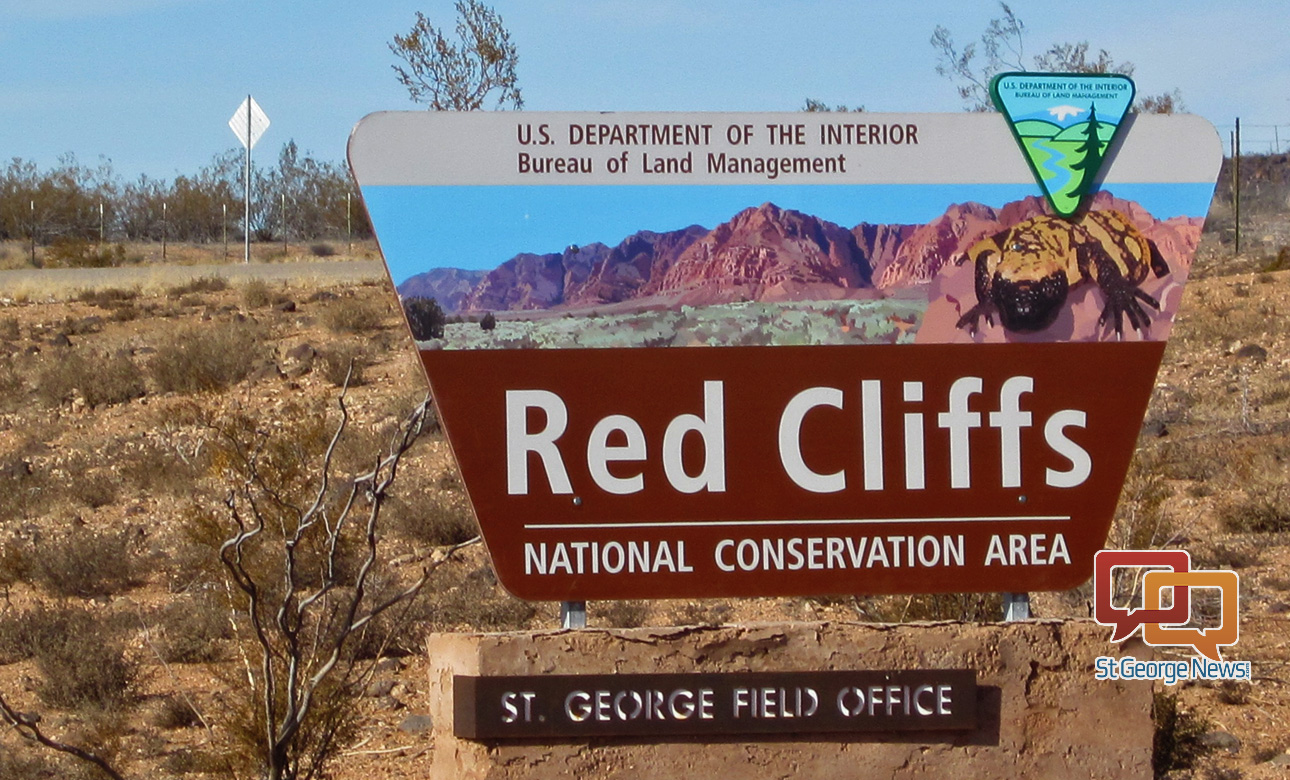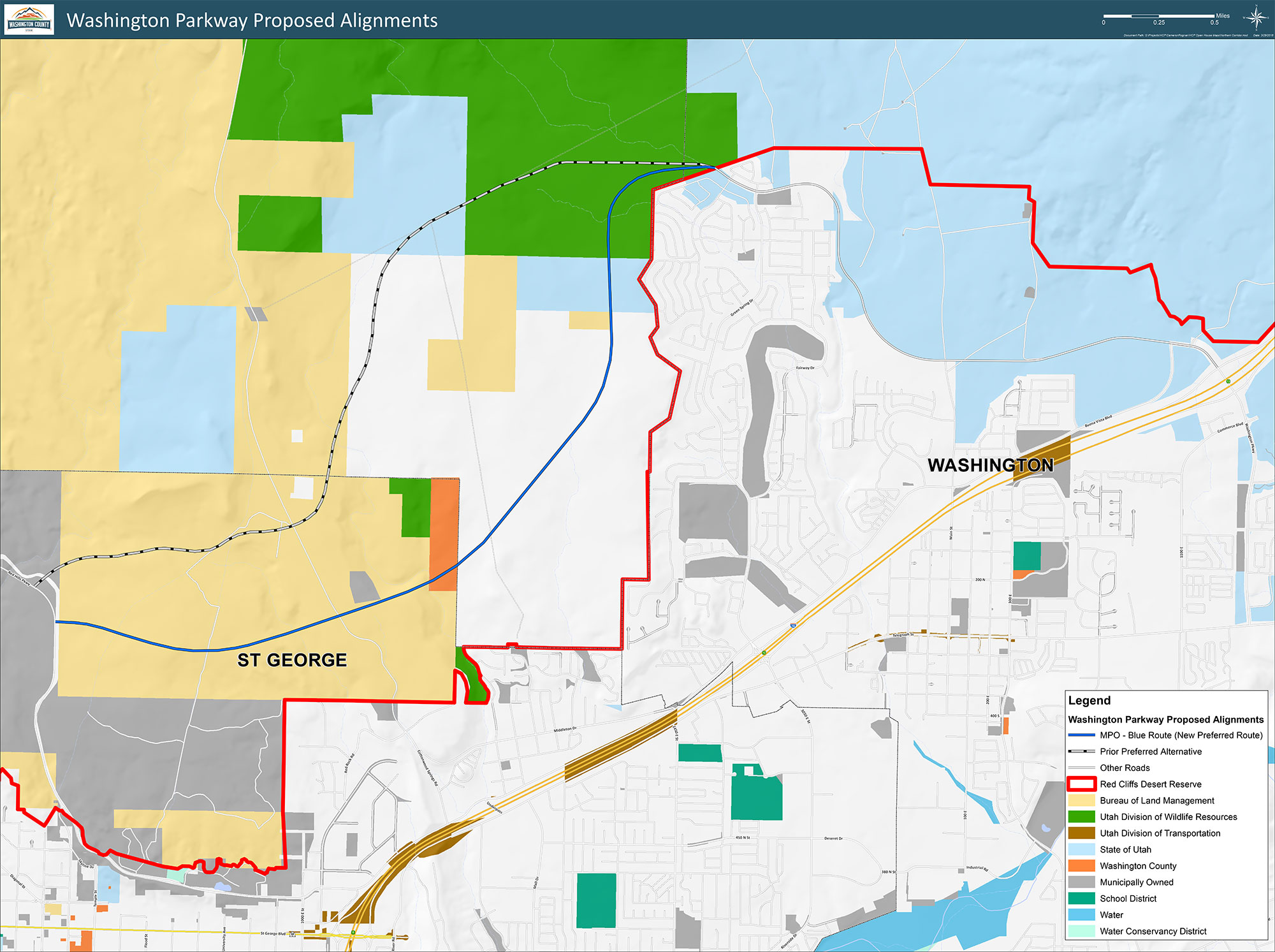
ST. GEORGE – Legislation that would allow the controversial northern corridor through the Red Cliffs Desert Reserve while also adding 6,865 acres to it was introduced in Congress Tuesday by Utah Republican Rep. Chris Stewart.
The bill proposes to take land west of Bloomington and south of Santa Clara – tentatively called “Zone 6” by county and tortoise reserve officials – and add it to the 62,000-acre desert tortoise reserve managed by the Washington County Habitat Conservation Plan, more commonly called the HCP.

Titled the “Desert Tortoise Habitat Conservation Plan Expansion Act,” the bill was the topic of an open house hosted by the Washington County Commission last month.
Read more: County officials propose legislation to expand tortoise habitat for northern corridor route
The purpose of the expansion is to offset the impact a 300-foot-wide right-of-way cutting though the reserve would have on existing tortoise habitat. The northern corridor itself is highly sought by county and municipal planners who believe it will alleviate future traffic congestion as Washington County continues to grow.
Read more: Planners: Congestion inevitable, but northern corridor would help
“This is a big win for my constituents in Washington County,” Stewart said in a statement. “This bill will finally allow for further transportation development to accommodate growth in one of the fastest growing areas in the nation.”
The St. George metropolitan area was recently ranked as the fast-growing in the United States by the U.S. Census Bureau. The University of Utah’s Kem C. Gardner Institute estimates the Washington County’s population will exceed 500,000 by 2065.

With all of that growth comes people with vehicles, Washington County Commissioner Dean Cox said Tuesday at a meeting of the Washington City Council. He was there to ask the council to pass a resolution supporting Stewart’s bill.
The St. George City Council passed a similar resolution earlier this month.
Read more: City passes resolution supporting controversial desert tortoise habitat expansion bill
The Washington City Council is anticipated to vote on a resolution at its Wednesday meeting.
“We appreciate Rep. Stewart’s leadership on this legislation that is vital to Washington County’s future,” according to a statement released by the Washington County Commission.
“The Washington County Commission has worked collaboratively with the BLM, Fish and Wildlife, the State Department of Wildlife Resources and local stakeholders to create a framework for meeting the resource needs of the tortoise and transportation requirements of Washington County’s growing population. Congressman Stewart’s legislation has our full support and backing,” the statement reads.
Those collaborative efforts have led to progress on the northern corridor, a roadway the county has been trying to get a route designation for since the creation of the HCP in the mid-1990s.
“We don’t have a hostile environment anymore with federal agencies,” Cox told the Washington City Council.

Previous attempts to get a right-of-way approved by the Bureau of Land Management and U.S. Fish and Wildlife Service hadn’t gained much traction, but that has changed in recent years as county and municipal officials have sought to collaborate with federal officials rather than fight with them, Cox said.
“We’re gaining traction we’re never had,” Cox said. “I think this is our best shot to solve the problem.”
In addition to adding 6,865 acres to the HCP and securing a right-of-way for the northern corridor, Stewart’s bill would also secure utility corridors that would provide county municipalities continued access to utility lines within the reserve.
“It gives us some clarity from a community planning standpoint,” Cox said.
The bill would also help move the renewal of the HCP forward.
Read more: Officials take new philosophical approach to HCP renewal, brainstorm for solutions
The original plan expired two years ago and has been extended by the U.S. Fish and Wildlife Service as federal, state and county officials work toward for renewal. Stewart’s bill would see the pending renewal of the HCP last for another 25 years.
Concerns and opposition
There are concerns and objections over the expansion of the HCP and the establishment of the northern corridor, however.

Zone 6, the area that would be added to the HCP under Stewart’s bill, was chosen for its thriving desert tortoise population discovered there. However, it is also heavily used by outdoor enthusiasts for hiking, mountain biking, climbing, off-roading and other activities.
Read more: County supports creating more desert reserve to offset northern corridor impacts
Outdoor groups have voiced concern that the area would be shut off to recreational use should it be made protected tortoise habitat.
The County Commission has said recreational use would still be allowed.
Environmental groups and individuals have long expressed opposition to the northern corridor, claiming it would cut the reserve in two and possibly have an adverse impact on the desert tortoise.
Read more: Letter to the Editor: Washington County commissioners seek to ram through ‘wish list’
St. George resident Richard Spotts is among those who oppose the northern corridor going through the HCP, and often speaks in opposition at the HCP Advisory Committee’s monthly meetings.

He sent St. George News an email outlining his objections to Stewart’s bill.
“It would force construction of the Northern Corridor/Washington Parkway in violation of an existing Habitat Conservation Plan (HCP) established under the Endangered Species Act (ESA) and in violation of a final Bureau of Land Management (BLM) Red Cliffs National Conservation Area (NCA) Plan,” Spotts wrote.
He also stated it would create a “dangerous national precedent” allowing a county to find ways to supersede other HCP and BLM plans through congressional legislation. This would allow counties to potentially undermine the integrity of environmental procedures established under federal law.
Spotts also questioned whether continued recreational use in Zone 6 was compatible with protected desert tortoise habitat.
The northern corridor is designed to be an east-west corridor for the county that would extend from Exit 13 on Interstate 15 in the east via Washington Parkway through the Red Cliffs Desert Reserve where it would connect to Red Hills Parkway in the west.
The corridor is designed to be a five-lane highway with a 300-foot right-of-way that would provide extra space for a bike lane and utility lines.
Resources
Email: [email protected]
Twitter: @MoriKessler
Copyright St. George News, SaintGeorgeUtah.com LLC, 2018, all rights reserved.
Yep, get them Dang Turtles the heck out of our way, we got to build a huge highway so we can build even more homes and sell more goods….gotta move commerce no matter what the cost
We’ll be saving the tortoises by developing the land they’re on. Everyone (including tortoises) loves strip malls, box stores, housing tracts, and urban sprawl. If you don’t there’s something wrong with you! It’s kind of like Syria; The USA is going to save the civilians from the alleged chemical gas by bombing out the whole country and destroying its gov’t, because it worked so well for Iraq, why not do it again. Don’t you understand, tortoises!? We’re going to SAVE YOU BY KILLING YOU! IT’S THAT SIMPLE!
if you don’t support the Tortoise you’re a racist !
This has little to do with the tortuous and everything to do with routing large trucks and auto through a residential neighborhood. Once a gain our Washington City representatives choose speed over our health and welfare. Shame on the city council and especial the journalist for disguising a traffic issue as an environmental issue.